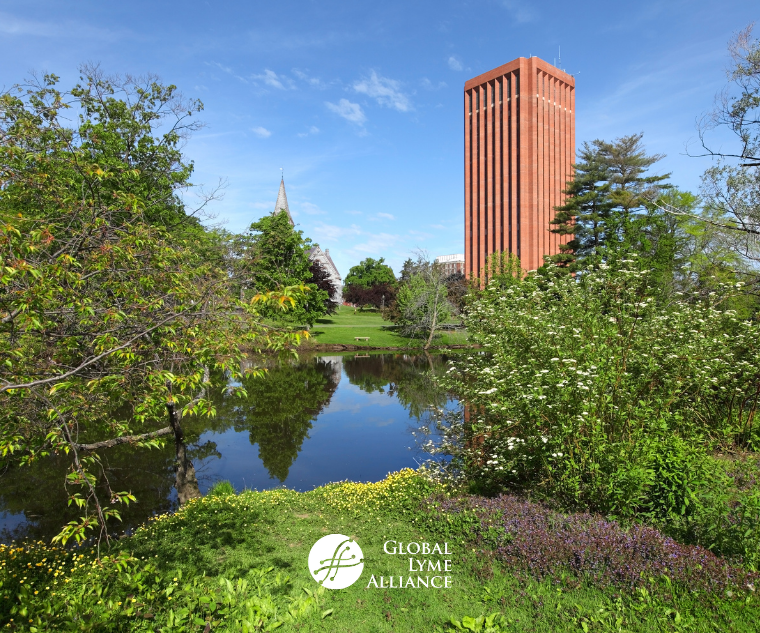
Scientists at UMass Amherst receive grant from the NIH to capture the outdoor locations of people with tick-borne diseases
A University of Massachusetts Amherst infectious disease epidemiologist has received a grant from the National Institutes of Health (NIH) to develop a new surveillance method to identify specific locations with the highest risk for tick-borne disease transmission. Traditional tick surveillance programs focus on large geographic areas and involve laborious efforts to trap and count ticks. "Instead of looking for the ticks, we want to focus on the people who have tick-borne disease, then talk to them about their recent activities and capture their use of outdoor spaces using GPS data loggers to help us find out where they may have been exposed," says Andrew Lover, assistant professor of biostatistics and epidemiology. "We're trying to develop a whole new way to do tick surveillance that's focused on people instead of the ticks, is economically efficient and, most importantly, sustainable." [caption id="attachment_11709" align="alignleft" width="150"] Infectious disease epidemiologist Andrew Lover is an assistant professor in the UMass Amherst School of Public Health and Health Sciences. CREDIT UMass Amherst[/caption] The study will be funded by a two-year, $427,043 grant from the National Institutes of Health (NIH). Professor Lover and his team will work with co-investigator Stephen Rich, professor of microbiology and director of TickReport, a UMass Amherst service that allows people to mail in ticks and find out if the ticks carry any disease-causing microbes. Cases of
Lyme disease have exploded since the 1990s to more than 427,000 cases annually and have been found in all 50 states. Caused by the bacterium
Borrelia burgdorferi and transmitted to humans via the blacklegged tick, Lyme disease and other infections transmitted by ticks "are major and emerging public health threats," Lover says. Researchers will enroll study participants through UMass Amherst's University Health Services and Cooley Dickinson Health Care. One group will have a confirmed tick-borne disease, and a second group without any tick-borne disease will serve as the control. The will be interviewed and given GPS data loggers to carry for two weeks during their regular outdoor activities. The data should help the researchers pinpoint specific areas where most of the local tick-borne disease transmission seems to be occurring. "There is this idea that 80% of disease transmission happens in 20% of locations - so a small number of areas can be responsible for the vast majority of infections," Lover says. The team will perform comprehensive tick surveys in areas that their data suggest very high and very low risk. In the Laboratory of Medical Zoology, home of the TickReport program, co-investigator Dr. Rich and colleagues will test the ticks for a range of pathogens. "We will compare tick abundance and pathogen prevalence between sites to validate results from the spatial analyses," Lover explains. Once identified, high-risk locations can be targeted for landscaping interventions or marking the location with specific signage to alert people. Lover says if the study proves successful, the surveillance method will be shared with communities in Massachusetts and beyond, where tick-borne disease is prevalent. "Our findings will dramatically expand our ability to directly and efficiently target the limited resources available for surveillance and interventions to spaces where they will have the highest impact to address an important public health problem," Lover says.
More News on GLA.org
Infectious disease epidemiologist Andrew Lover is an assistant professor in the UMass Amherst School of Public Health and Health Sciences. CREDIT UMass Amherst[/caption] The study will be funded by a two-year, $427,043 grant from the National Institutes of Health (NIH). Professor Lover and his team will work with co-investigator Stephen Rich, professor of microbiology and director of TickReport, a UMass Amherst service that allows people to mail in ticks and find out if the ticks carry any disease-causing microbes. Cases of
Lyme disease have exploded since the 1990s to more than 427,000 cases annually and have been found in all 50 states. Caused by the bacterium
Borrelia burgdorferi and transmitted to humans via the blacklegged tick, Lyme disease and other infections transmitted by ticks "are major and emerging public health threats," Lover says. Researchers will enroll study participants through UMass Amherst's University Health Services and Cooley Dickinson Health Care. One group will have a confirmed tick-borne disease, and a second group without any tick-borne disease will serve as the control. The will be interviewed and given GPS data loggers to carry for two weeks during their regular outdoor activities. The data should help the researchers pinpoint specific areas where most of the local tick-borne disease transmission seems to be occurring. "There is this idea that 80% of disease transmission happens in 20% of locations - so a small number of areas can be responsible for the vast majority of infections," Lover says. The team will perform comprehensive tick surveys in areas that their data suggest very high and very low risk. In the Laboratory of Medical Zoology, home of the TickReport program, co-investigator Dr. Rich and colleagues will test the ticks for a range of pathogens. "We will compare tick abundance and pathogen prevalence between sites to validate results from the spatial analyses," Lover explains. Once identified, high-risk locations can be targeted for landscaping interventions or marking the location with specific signage to alert people. Lover says if the study proves successful, the surveillance method will be shared with communities in Massachusetts and beyond, where tick-borne disease is prevalent. "Our findings will dramatically expand our ability to directly and efficiently target the limited resources available for surveillance and interventions to spaces where they will have the highest impact to address an important public health problem," Lover says.
More News on GLA.org
